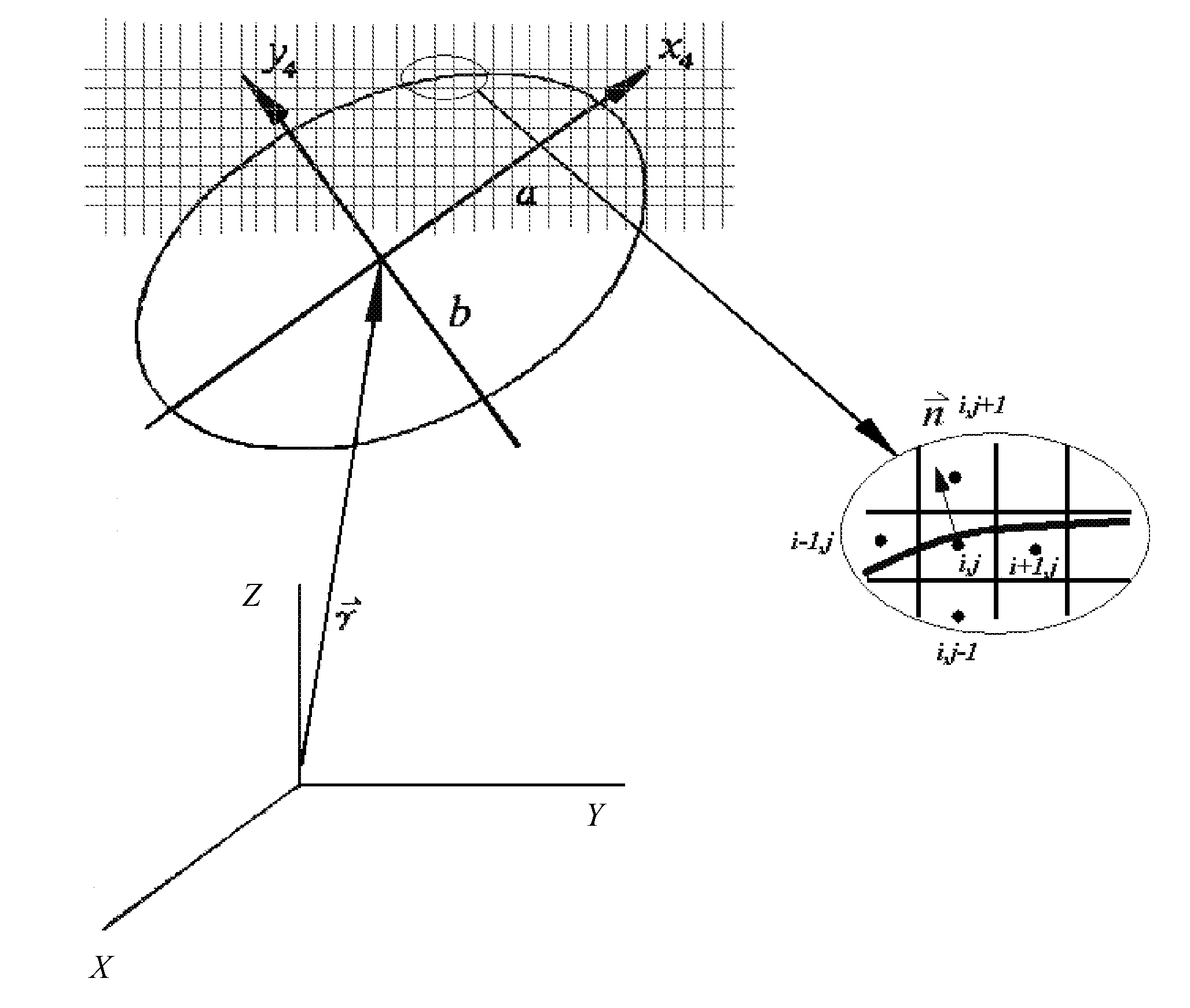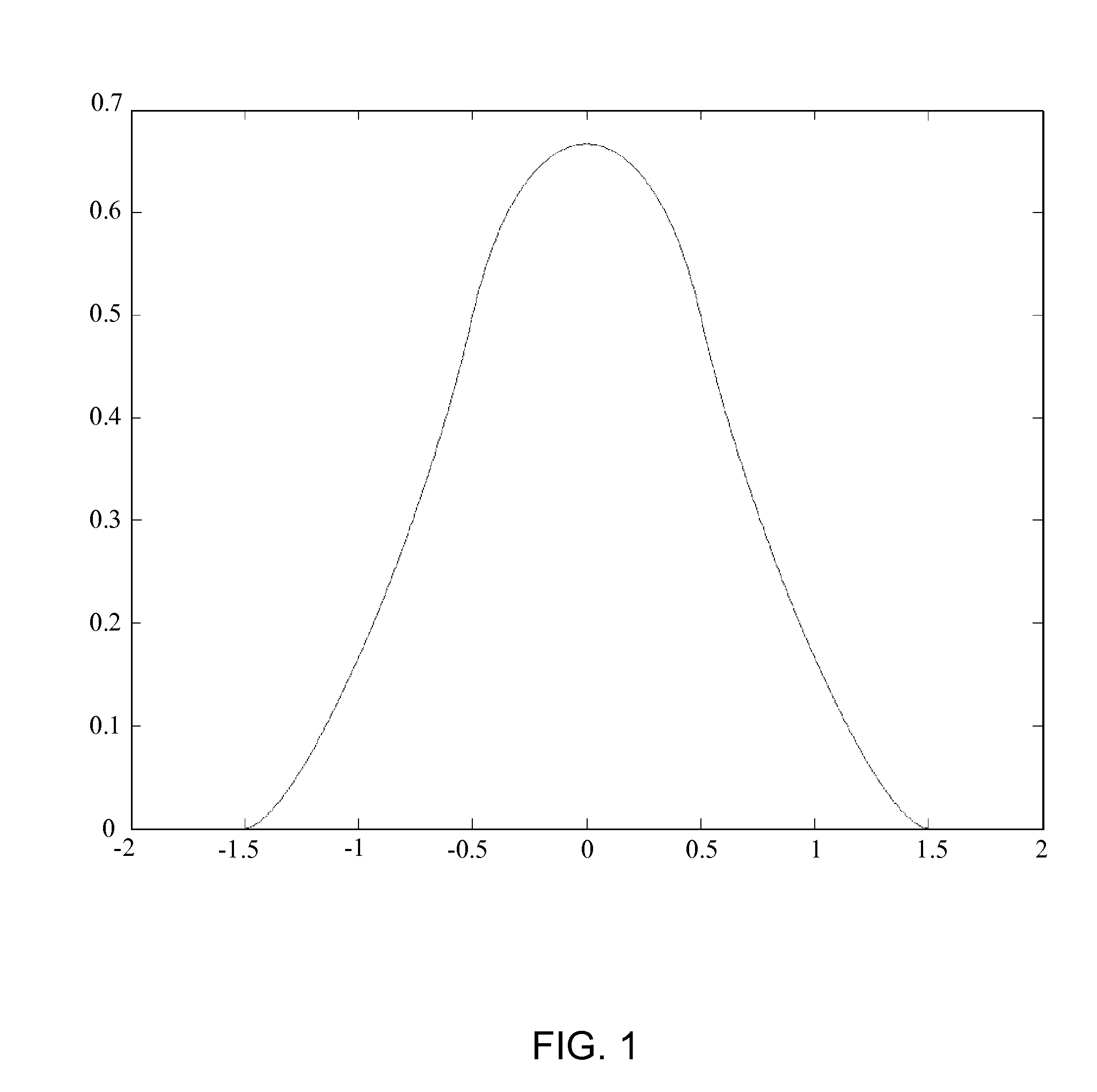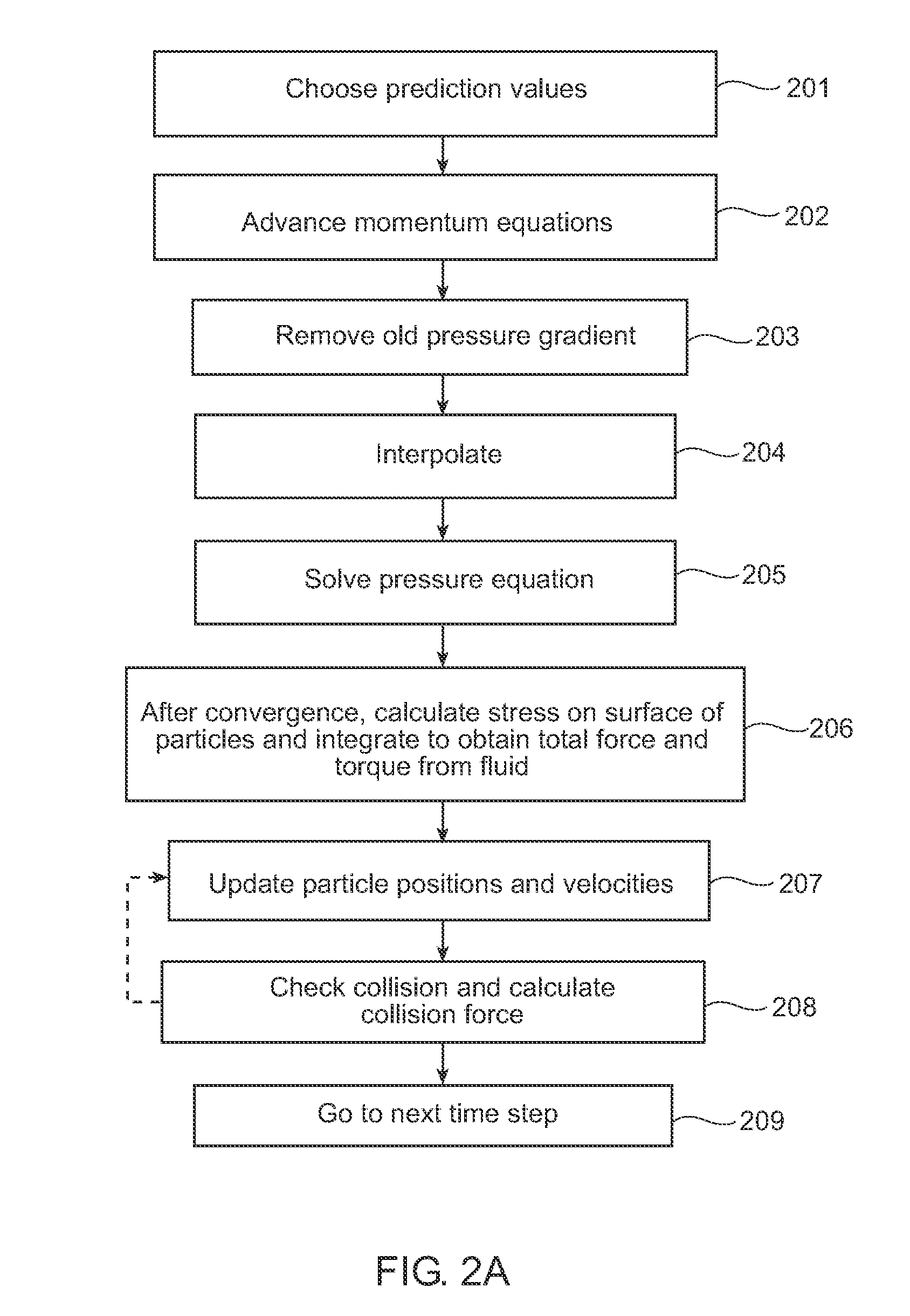Collision Effect And Particle Information Update In Particulate Fluid Flow Simulations
a particle information and fluid flow technology, applied in the field of collision effect and particle information update in particulate fluid flow, can solve the problem of small cost (in terms of cpu time) of taking surface integrals compared to cos
- Summary
- Abstract
- Description
- Claims
- Application Information
AI Technical Summary
Benefits of technology
Problems solved by technology
Method used
Image
Examples
Embodiment Construction
I. Updating Particle Information
[0028]1. Governing Equations
[0029]One set of equations to be used is the momentum equations, which equations are to be solved in the entire domain (fluid and solid particles). The momentum equations are given by equations (1) and (2), which, along with the other equations numerically-referenced below, are set forth in the Appendix of the specification. In equation (2), ΘP is an indicator function, which equals: 1 for each mesh cell completely occupied by particles, 0 for fluid, and is the ratio of the volume occupied by particles to the volume of the mesh cell.
[0030]Another equation to be used is the continuity equation, which is given as equation (3).
[0031]Because the particles are rigid bodies, a rigidity constraint is required, which leads to the vanishing of the deformation rate tensor, as shown in equation (4), where {right arrow over (U)} is the velocity of the particles' center of mass, {right arrow over (ω)} is the angular velocity of the part...
PUM
 Login to View More
Login to View More Abstract
Description
Claims
Application Information
 Login to View More
Login to View More - R&D
- Intellectual Property
- Life Sciences
- Materials
- Tech Scout
- Unparalleled Data Quality
- Higher Quality Content
- 60% Fewer Hallucinations
Browse by: Latest US Patents, China's latest patents, Technical Efficacy Thesaurus, Application Domain, Technology Topic, Popular Technical Reports.
© 2025 PatSnap. All rights reserved.Legal|Privacy policy|Modern Slavery Act Transparency Statement|Sitemap|About US| Contact US: help@patsnap.com



